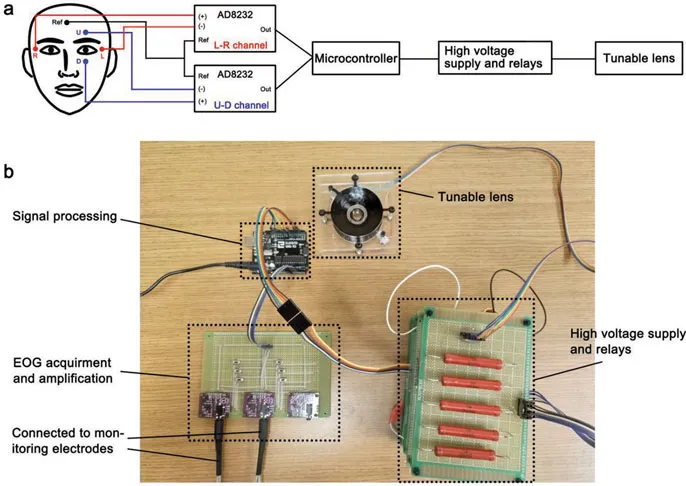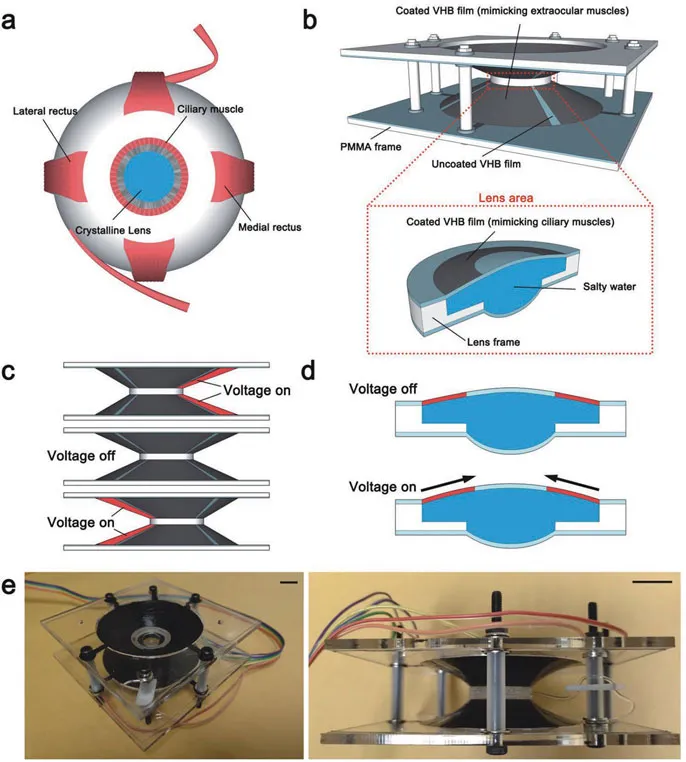These Lenses Zoom With a Couple Blinks of Your Eyes
Researchers have developed a soft polymer lens that changes shape based on electrical input
/https://tf-cmsv2-smithsonianmag-media.s3.amazonaws.com/filer/7c/47/7c47e1b5-02cd-47d7-8426-7d8efe4c4612/contact_lens.jpg)
We’re now one step closer to being cyborgs, thanks to a new optical lens that can zoom in and out in response to electric signals generated by human eyes. The lenses, which are made from a soft material, change focus when the user blinks twice.
“Potential applications may include, for example, adjustable glasses or visual prosthetic devices or even soft robotics applications,” says Shengqiang Cai, a professor of engineering at the University of California, San Diego, who led the research, recently published in the journal Advanced Functional Materials.
The lens is made to mimic that of the human eye. It’s composed of saline trapped between layers of a polymer film that can change shape and thickness in response to electric signals. Test subjects had wired electrodes applied to the skin around their eyes to capture signals generated by eye movement. The signals were transmitted through a signal processor to the lens. A double blink would change the focal length of the lens, bringing near or far objects into focus.
The technology is “an advance on some existing concepts, but sort of takes it to the next level,” says Michael Dickey, a professor of chemical and biomolecular engineering at North Carolina State University.
Electroactive polymer films are not new, Dickey says—they’re often used in research into artificial muscles—but controlling them with signals from the human body is novel.

Cai cautions that this is simply a proof of concept study, and we’re far from having zoomable contact lenses. For one, few people are willing to walk around wearing electrodes stuck to their faces, so the technology would have to be made wireless. It would also need to be dramatically miniaturized.
Initials next steps for the team will involve testing the lens using flexible stretchable electrodes, which better capture and process signals than the relatively stiff ones used in the testing. They’ll also be working to make the lenses move more smoothly and continuously, more like the human eye. And they’ll try replacing the saline inside the lenses with hydrogels that may reduce blurriness.

The lenses could be useful in the growing field of soft robotics—robots made from flexible, squishable materials. Soft robots can “interact with human beings and fragile objects in a much friendlier way,” Cai says. They can be used for applications from surgery to eldercare to fruit-picking. A soft robot that needs to “see” could benefit from a soft lens rather than a traditional glass one.
The technology demonstrated by the lens could be used for non-visual applications too, Cai says. In theory, any kind of soft device could be controlled by any biological signal—robot arms controlled by EKG signals, robot heights that expand in response to tapping your fingers, anything.
Cai and his team are in the process of applying for a patent on the technology, and they’ve received interest from commercial partners too. But, as Cai warns again, it’s very early days—so don’t ditch your glasses just yet.
/https://tf-cmsv2-smithsonianmag-media.s3.amazonaws.com/accounts/headshot/matchar.png)


/https://tf-cmsv2-smithsonianmag-media.s3.amazonaws.com/accounts/headshot/matchar.png)